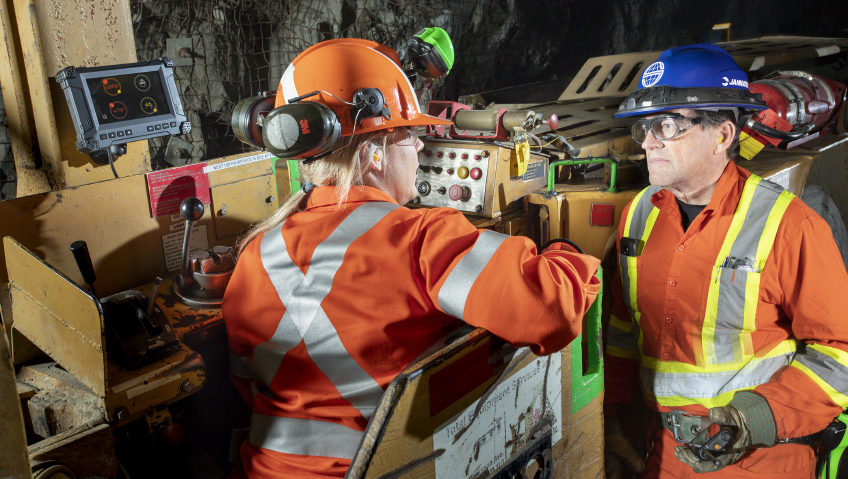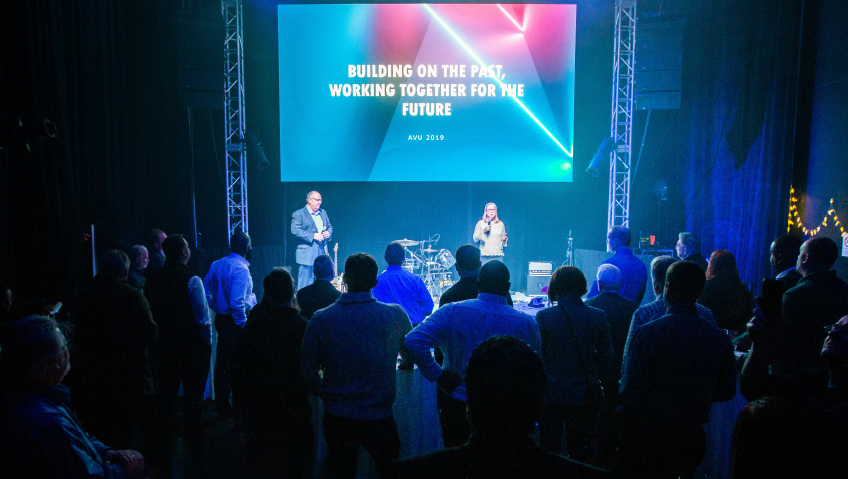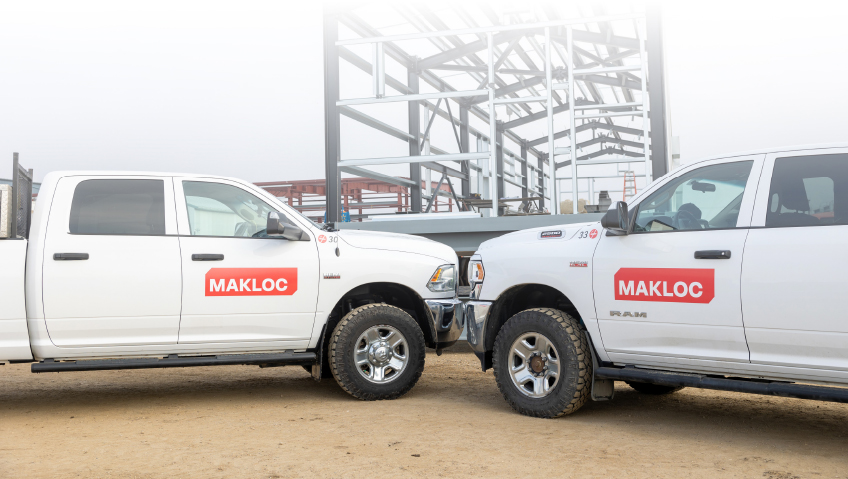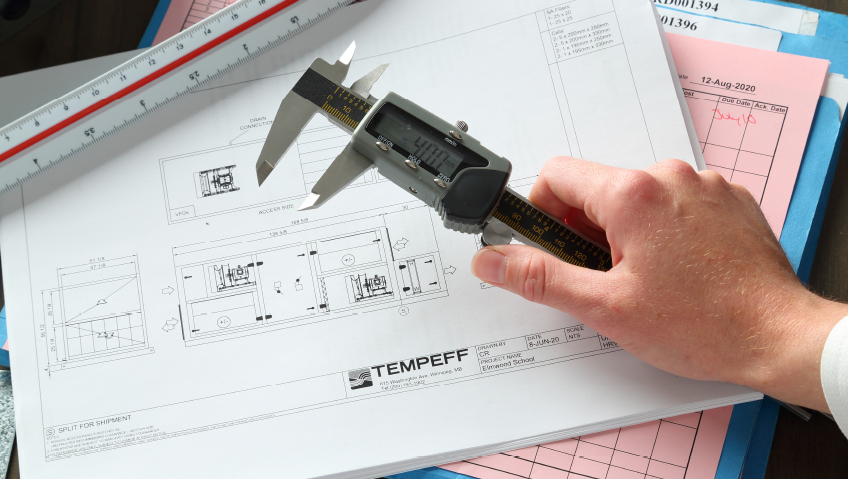Innovation stops for no one, and few companies realize this better than Canada’s own Jannatec Technologies. Headquartered in the world’s hard rock mining capital of Sudbury, Ontario, Jannatec is renowned worldwide for its state-of-the-art developments in collision avoidance, proximity detection, and communications technology.
“There are other people in the collision avoidance space and robotic space, but so far to date, from our research, we are the only ones combining it into one central graphical user interface (GUI),” says long-time Sales Manager Marc Brunet.
For both aboveground and underground mining, communications are critical for safety and efficiency. It was this mindset that led to the founding of Jannatec over four decades ago, and the release of its first product, the revolutionary Johnny Light. Merging a lamp and radio, the Johnny Light was a revolution in mining communication and safety and is still sold to this day.
Evolving over the decades, the Johnny Light combines the safety features of a rugged helmet with reliable communication capabilities. Like other Jannatec products, this smart helmet is customizable and comes in a variety of colours. High-visibility LEDs on the brim provide 360 degrees of lighting, while Mesh Communication from tech leader Sena Industrial enables workers to perform tasks hands-free, optimizing productivity.
With the next generation in development, the rechargeable Johnny Light can also be outfitted with RFID (Radio Frequency Identification) tagging for identification and tracking, and a camera to record photos and videos, which can easily be transferred via USB to a computer.
Partnering with Motorola Solutions, Jannatec is working on the G4 version of its popular product, a ruggedized, two-way radio with the ability to do radio and LTE so it can interact with new and old communication systems.
Presently, about 85 percent of the company’s clients use LMR—two-way land mobile radio systems—for underground communications. However, newer mine sites worldwide are implementing LTE (long-term evolution) so they can use cell phones for underground and surface operations. Representing the next generation of wireless communication, LTE has many advantages over LMR, including not having to rely on big telecom companies. Other key advantages include the ability to make private one-to-one calls instead of broadcasting to the masses, and using cell phones to upload or download pertinent information like diagrams and schematics.
“We are always on the threshold of new technologies,” says company President Rey Boucher. “By doing all this, you become more efficient. Instead of waiting until the end of the day to give someone their new task, you can dynamically change tasks so people are more efficient in their production.”
Like other products from Jannatec, the Johnny Light not only represents technological innovation but is durable and made to withstand extremely harsh environments in the form of challenging mine site operations. The company has seen Johnny Lights used in the field for 15 years or more.
“Our claim to fame is that our Johnny Light is mine-proof,” says Boucher. “And our goal is to build a communication device that will operate on legacy communication mediums and new technologies. We are the only one today we know of who does that in one package.”
Today, the company is seeing more and more environmental, social, and governance (ESG) requests from clients, which align perfectly with its sustainability goals. Since products like the Johnny Light are combined, mine workers carry less equipment; this means fewer charging stations, less infrastructure to support, less power required, and reduced e-waste. Clients can also return and recycle batteries and other products. And since apps are non-proprietary, customers are free to use their own for productivity.
For years, a big part of Jannatec’s success has been that everything is serviceable. Parts can be easily changed or repaired, and clients are trained and have the right to repair Johnny Lights. And instead of forcing buyers to purchase new chargers with every product version, Jannatec doesn’t use different cables unless absolutely necessary. Seeing that some mines have 800 to 900 radios, this represents huge savings on chargers alone.
Always on the lookout for new technology, and busily expanding its services and market reach, Jannatec continues to grow internally and externally. About two years ago, the company purchased and remodelled Mobile Communication Services (MCS) in Hamilton, Ontario. Serving the province’s communication needs for a quarter of a century, Jannatec MCS is a full-service business, selling and renting Motorola products and providing licensed technicians.
“We had existing clients that didn’t know what Jannatec could do, and now we are working with them on bigger projects to streamline their efforts,” says Brunet. “So we are bringing technology to help them with their performance.” The MCS purchase will see Jannatec increase its geographic footprint and enter other verticals with its technology, such as steel plants, construction, aggregate, warehousing, and more.
Considered by Jannatec to be “the most advanced underground wireless communication system” in mining, SmartView allows mines and other industries to monitor their equipment in real time, enhance worker safety, and help achieve satisfactory ROI. Via the company’s J.A.W.S Proximity Detection Application—which stands for Jannatec Advanced Warning System—SmartView helps greatly improve mine site safety. A centralized GUI interface, it helps foster situational awareness on one main screen, as seen in today’s cars. This includes lane departure, backup cameras, and adaptive cruise control.
“For all the technologies available today, we bring that philosophy, that mentality, into industrial applications,” comments Brunet. “We are leaning on a lot of those technologies to come up with something that is more industrialized, and we call that SmartView.”
With the ability to perform a digitalized circle check as opposed to a physical walk-around, the technology also provides information on tire pressure, oil levels, and much more. Instead of being entered on paper and analyzed, which can take days, information is collected and analyzed in minutes. Captured digitally, it is readily available to mobile superintendents who can send a message to workers about potential issues. As a result, it helps prevent catastrophic failures and lost time and money.
Another feature is TBAC, which stands for Training Based Access Control. A type of access card, it is scanned to determine if trained workers are allowed to start up and operate vehicles. If someone is not certified, the vehicle won’t allow them permission. This information is then catalogued, with information sent to mobile superintendents.
“It can be used for training, disciplining, and controlling where the vehicles are,” Boucher explains. “If someone moves the vehicle and they can’t find it, it wastes time, and this prevents it.” As an added measure, tracking chips can also be placed on vehicles, which can then be located and tracked through underground RFID.
With the purchase of MCS, Jannatec is looking at bringing its technology to sectors other than mining, such as transportation and logistics for the trucking industry. And in collision avoidance, Jannatec is eyeing other industries, including warehousing and construction, where blind spots are common.
In underground mining, vehicles are in tunnels and go forward or reverse, making backup cameras essential. With surface construction, however, a full 360° view is crucial on trucks and other heavy vehicles for the safety of workers and the public.
“So we’ve introduced radar and ultrasonic technology for surface, and that will be tied to the one module that’s on our tablet,” says Brunet. “It’s our main interface, but it’s modularized, so you can add modules as you go. You don’t need to buy the whole Cadillac at the beginning—you can buy the base module, and then add radar technology on the surface because there are always blind spots,” he says.
“People don’t realize how many blind spots there are in construction, because you’ve got pedestrians thinking the driver sees them, but they don’t, and that’s how accidents happen.” Radar on a screen will indicate, on multiple levels (audio and visual), where the individual is in relation to the vehicle. As with underground collision avoidance, this technology will detect potential hazards or people, and apply the brakes if necessary.
Recently, the company underwent a management change, with CEO Wayne Ablitt retiring in 2024. But Jannatec will continue to increase its technology aspirations in mining and other verticals and expand its geographic footprint in the United States. “In the next three to four years, we want to have an office in the U.S. representing Jannatec itself,” says Boucher.
Part of the role of this new office will be to build relationships between MineConnect in Canada and the United States. The most logical place to situate it is Elko, Nevada, a central mining hub. “You need to have a client to open up, and MineConnect gives us the ability to bridge that time to see if there is business there or not,” says Brunet.
To demonstrate its products, the company will also have a booth at the upcoming MINExpo® 2024 in Las Vegas, Nevada. Using a 20-foot-long track and a small-scale truck to simulate obstructions, Jannatec will demonstrate its advanced collision avoidance technologies. “You can sit there and hold the remote-control full throttle, and the truck will not go anywhere until the obstruction is gone,” says Boucher. The screen on the truck will also be mirrored to a stand-up display, so visitors can see operations for themselves.
“We don’t talk a lot about the service part of our business, but it’s our service that retains the business,” says Brunet. “We have a very strong service team, very knowledgeable, and that’s where relationships are built,” he says.
“Our clients trust us for what we do. When we say we are going to do something, we keep our word, and do it.”






